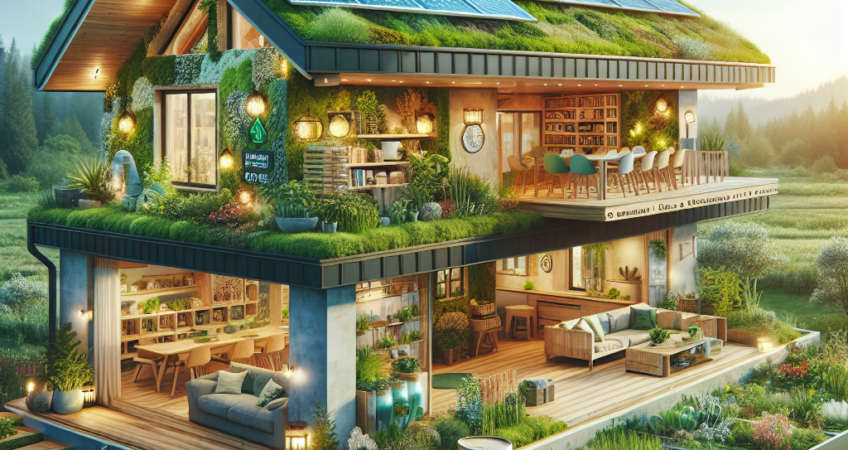Green home renovation, also known as eco-friendly renovation, is becoming more popular as people become more aware of the impact their homes have on the environment. By making small changes to their homes, homeowners can not only reduce their carbon footprint but also create a healthier and more sustainable living space. Here are some benefits of green home renovation and eco-friendly tips for a sustainable home.
Reduced Energy Consumption: One of the main benefits of green home renovation is reduced energy consumption. By making simple changes such as installing energy-efficient appliances, using LED lighting, and improving insulation, homeowners can significantly reduce their energy bills and lower their carbon footprint.
Improved Indoor Air Quality: Green home renovation often involves using non-toxic materials and improving ventilation systems, leading to improved indoor air quality. Poor indoor air quality can lead to respiratory problems and other health issues, so creating a healthier living space is essential for homeowners.
Increased Home Value: Eco-friendly homes are in high demand, and studies have shown that green homes can sell for a higher price than traditional homes. By investing in green home renovation, homeowners can increase the value of their property and attract more buyers when it comes time to sell.
Water Conservation: Green home renovation also includes implementing water-saving features such as low-flow toilets, faucets, and showerheads, as well as using rainwater harvesting systems. By conserving water, homeowners can reduce their water bills and help protect the environment.
Eco-Friendly Tips for a Sustainable Home:
1. Use sustainable materials: When renovating your home, opt for sustainable materials such as bamboo flooring, reclaimed wood, and recycled glass countertops. These materials are not only eco-friendly but also durable and stylish.
2. Install energy-efficient appliances: Replace old appliances with energy-efficient models to reduce your energy consumption and lower your utility bills. Look for appliances with the Energy Star label, which indicates that they meet strict energy efficiency guidelines.
3. Improve insulation: Proper insulation is key to reducing energy consumption and maintaining a comfortable temperature in your home. Consider adding insulation to your walls, attic, and floors to prevent heat loss and save on heating and cooling costs.
4. Incorporate natural light: Maximize natural light in your home by installing energy-efficient windows and skylights. Natural light not only brightens up your space but also reduces the need for artificial lighting, saving energy and reducing your carbon footprint.
5. Plant a garden: Create a sustainable outdoor space by planting a garden with native plants, fruit trees, and vegetable patches. Gardening not only provides fresh produce but also improves air quality, reduces stormwater runoff, and supports biodiversity.
In conclusion, green home renovation offers numerous benefits for homeowners, the environment, and future generations. By implementing eco-friendly tips and making sustainable choices in your home renovation project, you can create a more energy-efficient, healthier, and environmentally friendly living space. So why not start making greener choices for your home today?

